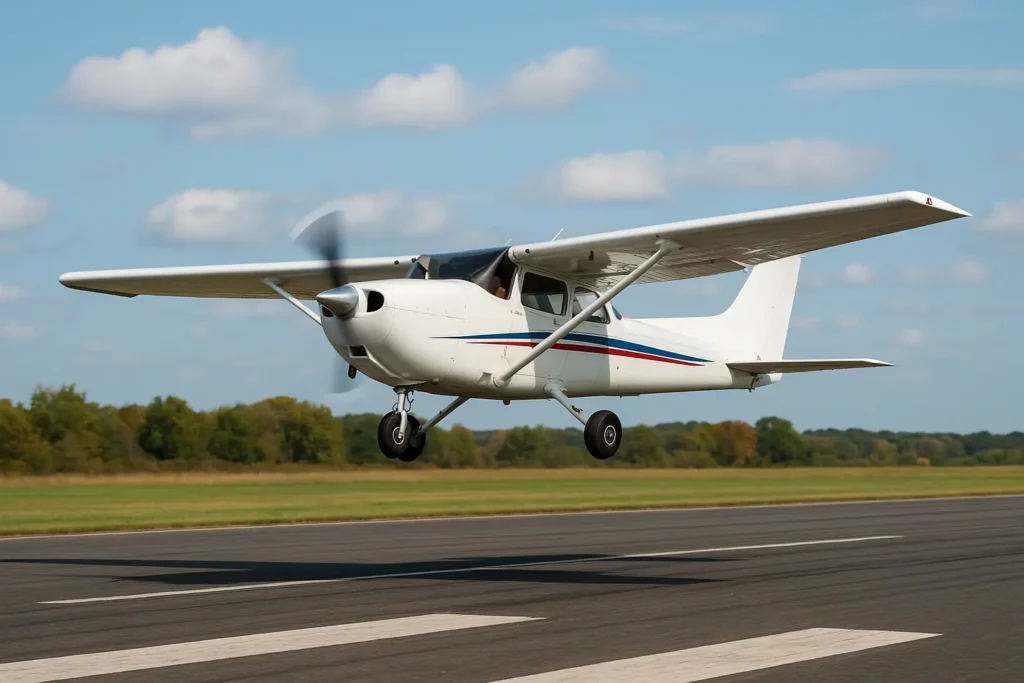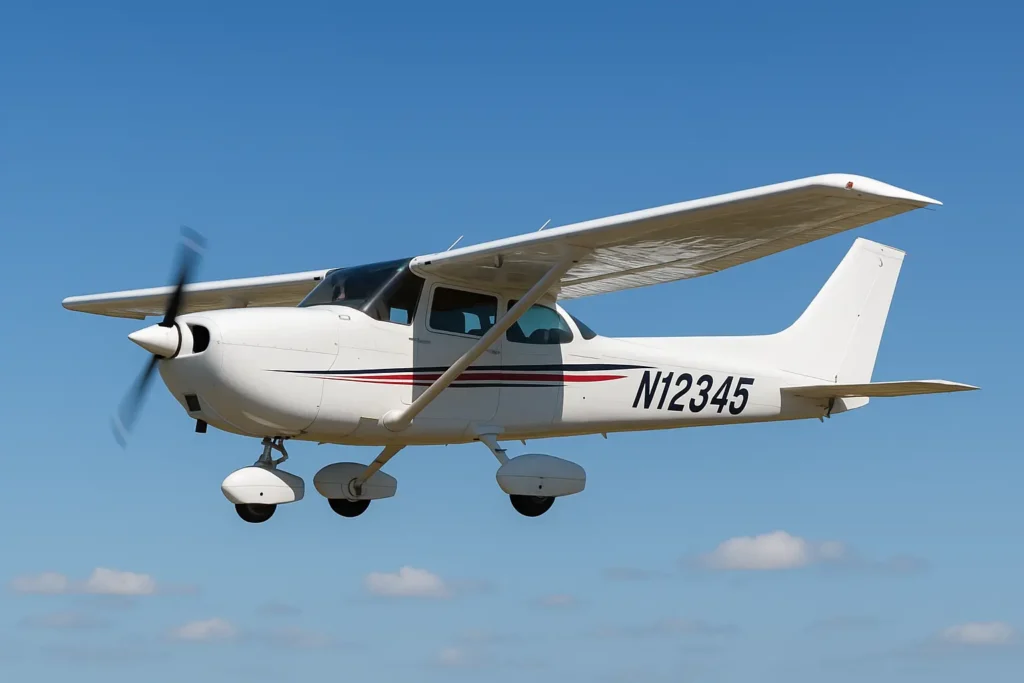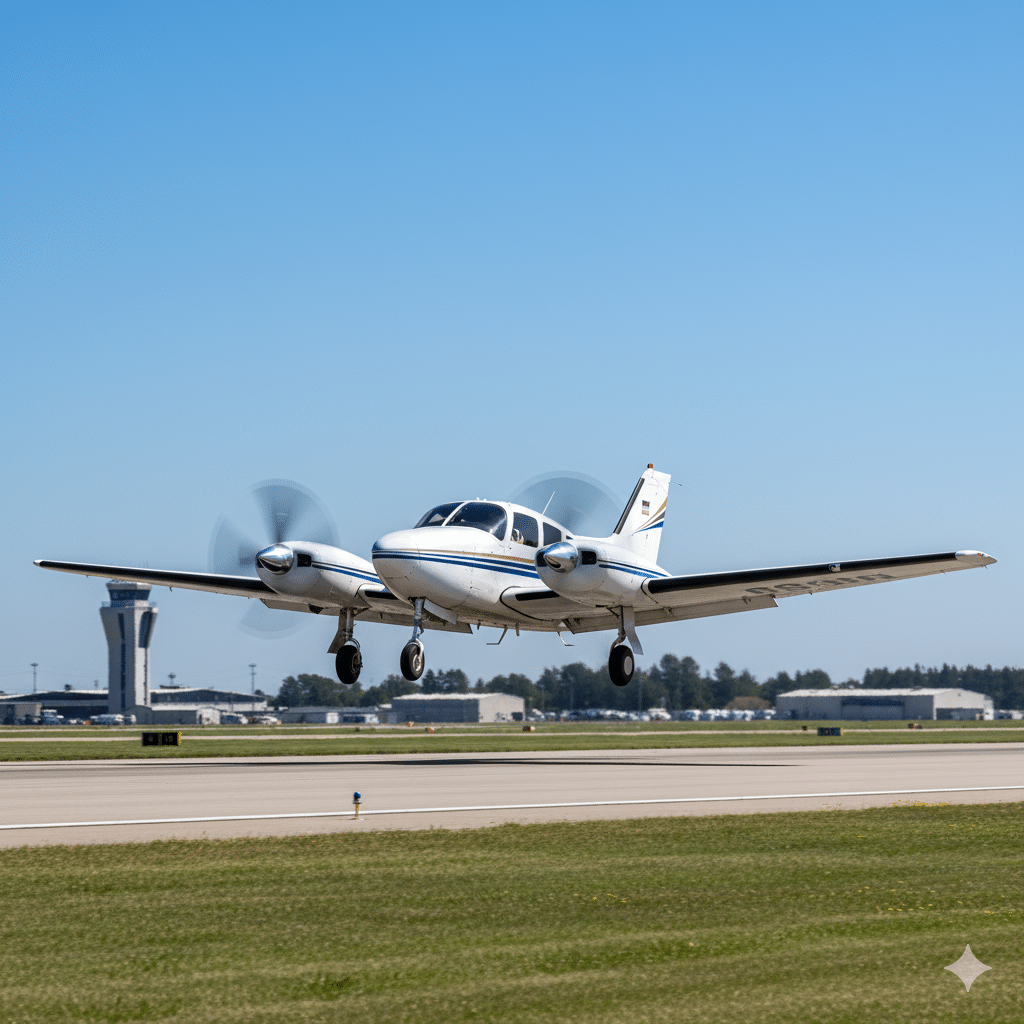Introduction to Small Aircraft
Small aircraft have revolutionized how people travel short distances across the United States. These compact, versatile flying machines are used for personal, business, and emergency purposes. Whether it’s a Cessna 172 carrying a family across state lines or a twin-engine Beechcraft flying executives to meetings, small aircraft have become a vital part of general aviation.
Their appeal lies in affordability, flexibility, and freedom. With over 5,000 public-use airports in the U.S., owning or chartering a small aircraft allows passengers to access destinations that commercial airlines can’t reach. Let’s explore every aspect of these aircraft — from cost and maintenance to FAA documentation and operational planning.

Types of Small Aircraft
Small aircraft come in various forms, each designed for specific purposes.
Single-Engine Small Aircraft
Single-engine airplanes like the Cessna 172 Skyhawk and Piper PA-28 Cherokee dominate U.S. skies. They’re simple to operate, economical, and ideal for flight training. With ranges of 500–800 nautical miles, these aircraft serve well for regional travel and recreational flying.

Twin-Engine Small Aircraft
Twin-engine models such as the Beechcraft Baron and Piper Seneca offer increased redundancy and performance. Though more expensive to operate, they provide better payload capacity, speed, and safety in engine-failure scenarios. Twin aircraft are preferred for business and air charter operations due to their reliability.

Manufacturers of Small Aircraft in the USA
The U.S. leads the global small aircraft industry. Cessna, Piper Aircraft, Cirrus, Beechcraft, Mooney, and Diamond Aircraftare top manufacturers producing models that meet FAA and global safety standards. Cirrus’ SR22, with its parachute system, has set new safety benchmarks in small aircraft innovation.
Pricing of Small Aircraft (2025 Update)
The price of small aircraft varies widely:
-
Used light aircraft: $50,000–$200,000
-
New single-engine aircraft: $300,000–$800,000
-
Twin-engine aircraft: $1 million–$2.5 million+
Operating costs, insurance, and storage must also be factored into the overall budget.
Safety Standards and Training Requirements
All small aircraft pilots in the USA must train under FAA Part 61 or Part 141 programs. Pilots undergo regular check rides, safety briefings, and recurrent training. Aircraft must comply with maintenance standards and undergo annual and 100-hour inspections to ensure airworthiness.
Runway and Airport Requirements for Small Aircraft
Most small aircraft can operate from short, 3,000-foot runways — some even from grass strips. Aircraft like the Cessna 182 Skylane are renowned for short takeoff and landing (STOL) capabilities, making them ideal for rural or remote areas.
FAA Regulations and Documentation
Every small aircraft requires:
-
FAA registration and N-number
-
Airworthiness certificate
-
Maintenance logs
-
Pilot’s operating handbook (POH)
Additionally, owners must ensure compliance with FAA Advisory Circulars, FAR Part 91, and AD (Airworthiness Directives) for continued safety.
Maintenance and Parts Availability in the USA
Thanks to the large general aviation industry, maintenance and spare parts are widely available. Annual maintenance typically costs between $2,000–$10,000 depending on the model. Authorized maintenance facilities (AMOs) handle engine overhauls, avionics, and airframe repairs.
Operating Costs of Small Aircraft
Operating costs include:
-
Fuel: $60–$120/hour
-
Hangar: $500–$1,000/month
-
Insurance: $2,000–$5,000/year
-
Maintenance: $2,000–$10,000/year
Twin-engine models have roughly double the hourly operational cost of single-engine aircraft.
Range, Payload, and Performance of Small Aircraft
A typical small aircraft has:
-
Range: 600–1,200 nautical miles
-
Payload: 800–1,500 lbs
-
Cruise speed: 120–220 knots
-
Ceiling: 10,000–25,000 feet
Fuel Types and Efficiency
Most small aircraft use Avgas 100LL, while some newer models and turboprops use Jet A. With increasing environmental focus, manufacturers are testing sustainable aviation fuels (SAF) to reduce emissions.
Small Aircraft for Business and Air Travel
Small aircraft play major roles in:
-
Cross-city air travel
-
Air ambulance services
-
Charter operations
-
Cargo and surveying
For medical transport and emergency services, aircraft like the Pilatus PC-12 and King Air 350 are widely used.
Glide Capabilities and Engine-Out Performance
In the event of engine failure, small aircraft can glide safely. For instance, a Cessna 172 glides approximately 1.5 nautical miles for every 1,000 feet of altitude — giving pilots time to plan a safe landing.
Mandatory Checks and Inspections
Aircraft must undergo:
-
Preflight inspection before each flight
-
100-hour check (for hire operations)
-
Annual inspection (for all aircraft)
-
ELT and transponder checks every 12–24 months
Flight Planning and Filing ATC Plans
Pilots must calculate weight, balance, route, fuel, and alternates. Filing VFR or IFR flight plans is mandatory for controlled airspace. Apps like ForeFlight simplify ATC filing, route optimization, and weather briefing.
Weather Restrictions and Flight Conditions
Weather has a major impact on small aircraft safety. Flying in thunderstorms, icing, or poor visibility can be hazardous. Pilots must respect VFR minimums and always check METAR and TAF reports before takeoff.
Wind conditions play a crucial role in the safety and performance of any small aircraft. Pilots must evaluate wind direction and velocity during takeoff, landing, and cruise to ensure safe operation within manufacturer and FAA limits.
Crosswind Restrictions
Most small aircraft, like the Cessna 172 Skyhawk, have a maximum demonstrated crosswind component between 12 and 17 knots. While experienced pilots can sometimes handle slightly higher values, it’s important to remember that these limits are not regulatory — they are performance-based, determined during certification testing.
Strong crosswinds can make maintaining runway alignment difficult during takeoff or landing, increasing the risk of runway excursions or loss of directional control.Headwind Considerations
Headwinds are generally beneficial for small aircraft operations. They reduce takeoff roll and shorten landing distance, improving performance and safety margins. For example, a headwind of 10–15 knots can significantly reduce the required runway length, making headwinds the most favorable wind condition for short or soft field operations.
Tailwind Restrictions
Tailwinds, on the other hand, have a negative impact on small aircraft performance. Most manufacturers advise avoiding takeoff or landing with tailwinds greater than 5 knots. Tailwinds increase both ground roll distance and approach speed, which can be hazardous on short runways or high-elevation airports.
Pilot Technique and Wind Management
To handle varying wind conditions safely, pilots of small aircraft:
-
Use rudder correction and aileron into the wind during crosswind takeoffs and landings.
-
Verify wind limits from the Pilot’s Operating Handbook (POH).
-
Always check METARs and TAFs for surface wind trends before flight.
-
Consider alternative airports or runways if wind components exceed the aircraft’s safe limits.
Seating Capacity and Comfort
Small aircraft seating ranges from 2 to 6 passengers. Modern designs feature leather interiors, digital avionics, and soundproofing for enhanced comfort.
The Future of Small Aircraft in the USA
The next decade will bring electric propulsion, hybrid engines, and autonomous aircraft. Companies like Eviation and Joby Aviation are already developing all-electric small aircraft for sustainable air mobility.
Frequently Asked Questions (FAQs)
Q1. What is the average cost of a small aircraft in the USA?
A: It ranges from $50,000 for used trainers to over $2 million for luxury twin-engine aircraft.Q2. How much does it cost to operate a small aircraft per hour?
A: Between $80 and $300 per hour depending on fuel, maintenance, and insurance.Q3. Do I need FAA certification to fly a small aircraft?
A: Yes. A Private Pilot License (PPL) is mandatory, and an FAA medical certificate is required.Q4. How often do small aircraft require maintenance?
A: Annual inspections are mandatory, plus 100-hour checks for commercial use.Q5. Can small aircraft fly in bad weather?
A: Most small aircraft are limited by visibility and wind conditions; IFR-rated pilots can handle mild adverse weather.Q6. What are the most reliable small aircraft brands?
A: Cessna, Piper, Cirrus, and Beechcraft remain the most trusted in the general aviation market.Conclusion
Small aircraft remain a cornerstone of American general aviation, offering unmatched accessibility, safety, and cost-effectiveness. Whether for private pilots, air ambulance services, or charter companies, these aircraft combine freedom with modern technology. As innovation continues, the skies are set to become even more sustainable and efficient.
-
-